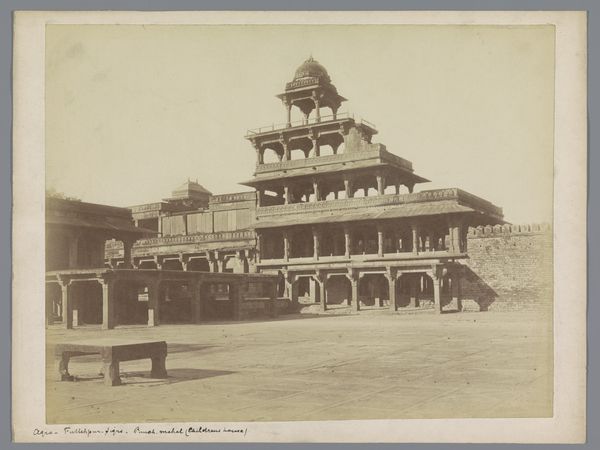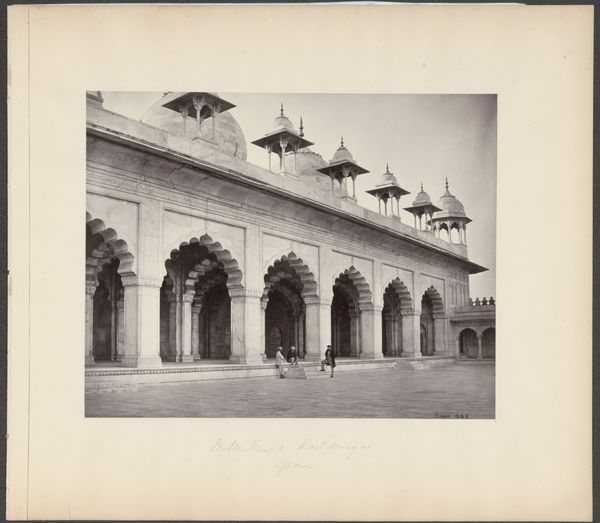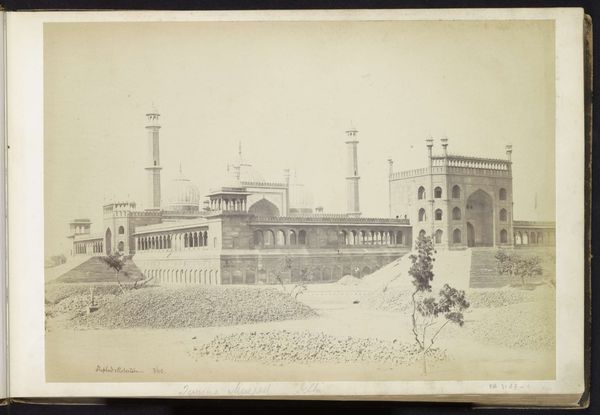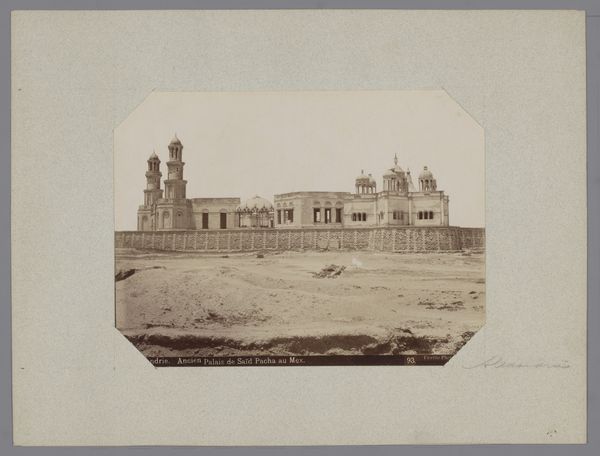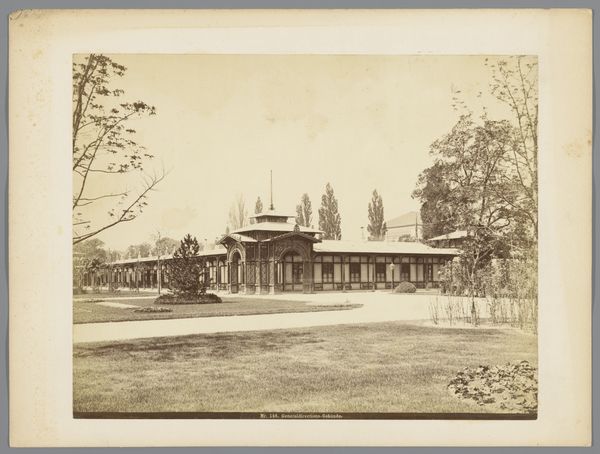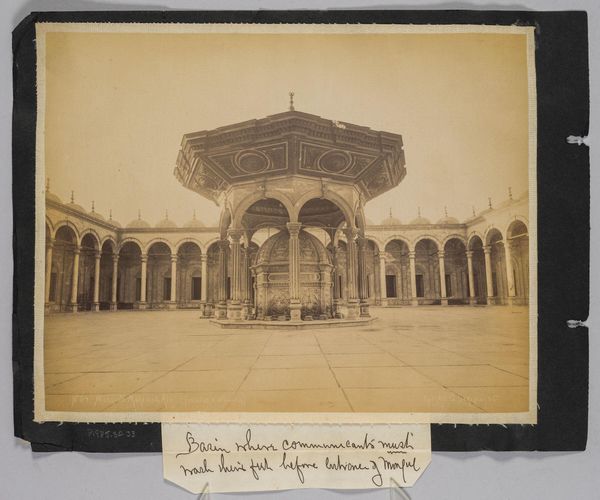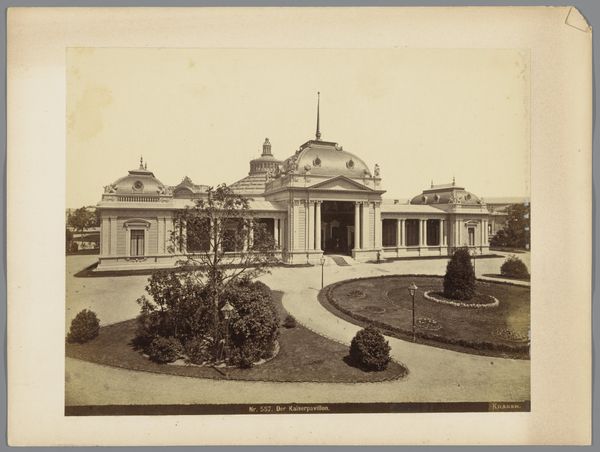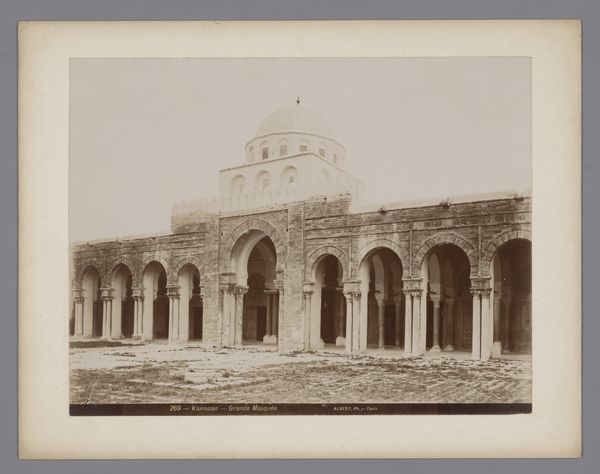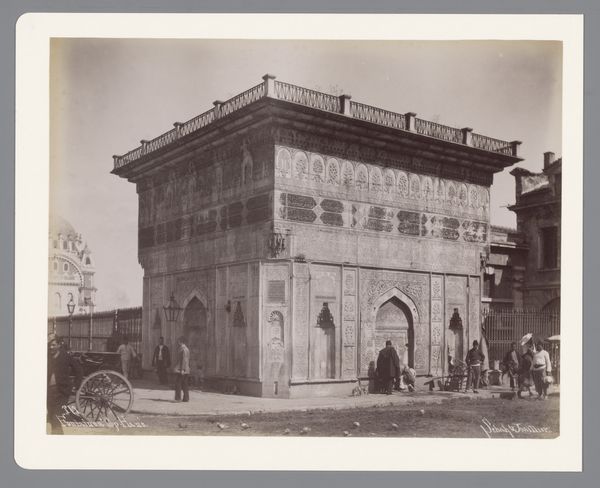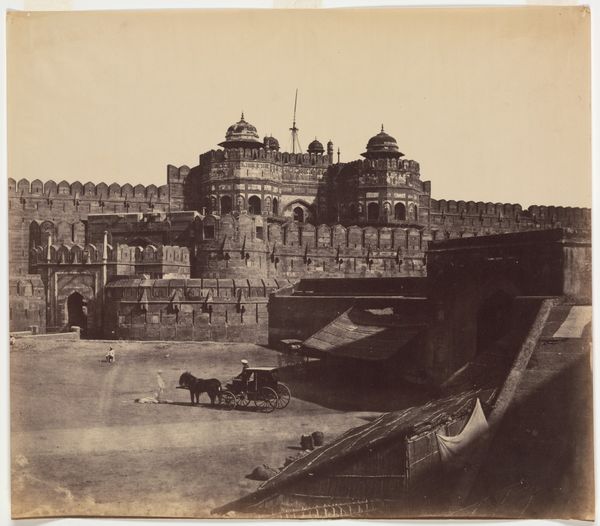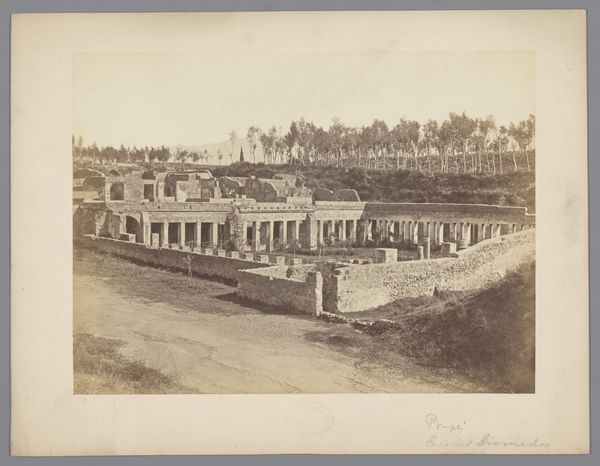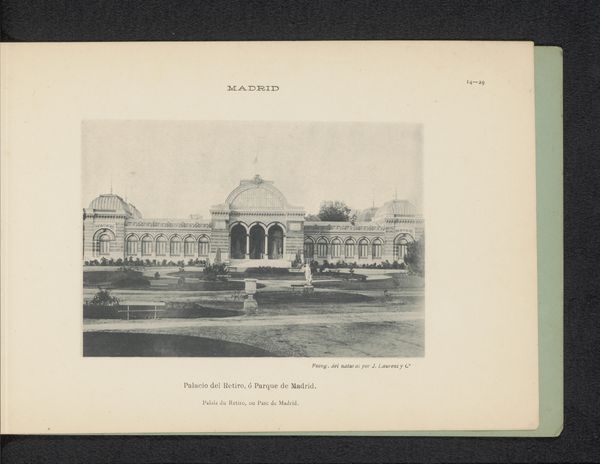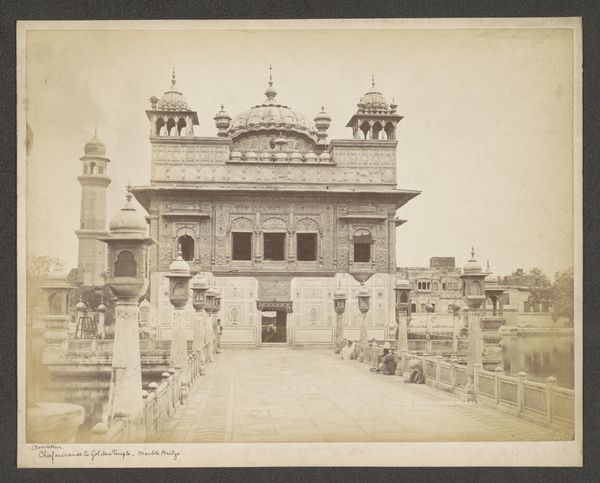
print, photography, gelatin-silver-print, architecture
# print
#
landscape
#
photography
#
gelatin-silver-print
#
19th century
#
islamic-art
#
watercolor
#
architecture
Dimensions: height 220 mm, width 279 mm, height 238 mm, width 316 mm
Copyright: Rijks Museum: Open Domain
Samuel Bourne made this albumen print of the Salim Chishti mausoleum at Fatehpur Sikri in Uttar Pradesh, India. Bourne was operating within a colonial system, documenting the Indian landscape and architecture for a British audience. Bourne's photographs, while aesthetically striking, also served to reinforce the power dynamics of the British Empire by capturing and framing Indian culture through a Western lens. The mausoleum, a sacred space for the Mughal Empire, is presented as an object of study, devoid of its spiritual and cultural context. The vast, empty courtyard in the foreground emphasizes the monumentality of the architecture, but also creates a sense of distance and detachment, reflecting the colonial gaze. Understanding this image requires delving into the social and political history of British India, exploring how photography was used as a tool of documentation, control, and representation. By researching Bourne's career, the context of colonial photography, and the history of the Mughal Empire, we can uncover the complex layers of meaning embedded within this seemingly straightforward image.
Comments
No comments
Be the first to comment and join the conversation on the ultimate creative platform.
